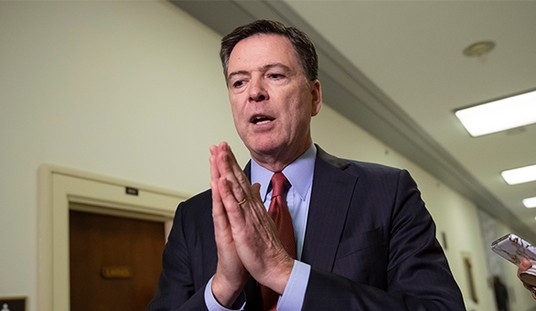Following the terrorist attacks of Sept. 11, 2001, one of the big what-ifs focused on the al Qaeda training camps in Afghanistan, which for years had been cranking out operatives while the U.S. — apart from the missiles of 1998 — pretty much watched and let it happen. What if those training camps had been stopped much sooner? What if the U.S. superpower had bestirred itself much earlier to shut the whole thing down? What if … ? Or, to put it another way, if only…
That old scene comes often to mind these days, with reference to Iran’s continuing nuclear bomb program. But the specific context that brings me to it this week is a report released August 7, by the Washington-based Institute for Science and International Security, on Iran’s partner in proliferation — North Korea. Bearing the modest title, “Recent Doubling of Floor Space at North Korean Gas Centrifuge Plant,” this report details some of the latest activity at North Korea’s Yongbyon nuclear complex, as observed by satellite. The news is that the building there which houses a centrifuge plant for uranium enrichment “is now covered by an extended roof that is roughly twice the size of the previous one.” The ISIS report is careful to stress that there are plenty of unknowns, including what exactly is going on under that massively expanded roof, and whether North Korea has secretly built similar facilities elsewhere. But this roof is one of the latest in a long series of signs suggesting that North Korea, along with its plutonium-based nuclear bomb program, is on its way to a uranium-based nuclear arsenal as well. That would be neatly compatible with Iran’s uranium-based push toward nuclear weapons. All of which is very bad news, in view of North Korea’s record of peddling proliferation for decades, whether missiles to Iran, or a copy of the entire Yongbyon nuclear reactor to Syria.
What’s doubly alarming is how very ho-hum this has all become. Yes, of course, when North Korea actually sends up a ballistic missile or conducts a nuclear test, it makes headlines, and there are hasty consultations and pronouncements and maybe another round of sanctions. Who can forget President Obama in April, 2009, in response to a North Korean long-range missile test, declaring: “rules must be binding. Violations must be punished. Words must mean something.” But North Korea has by now conducted three nuclear tests, in 2006, 2009 and 2013. These have been punctuated by the unveiling in 2010 of the Yongbyon uranium centrifuge plant (the one that now has a roof twice the original size), by ballistic missile tests (as North Korea works toward weapons that will put the U.S. in range), by the discovery of a copy of the Yongbyon nuclear reactor built with North Korean help on the Euphrates River in Syria (destroyed by an Israeli air strike in 2007), and by threats — pernicious, even if currently hollow — to launch nuclear strikes on Washington and U.S. bases in the Pacific.
The pattern by now is that every so often North Korea generates a lot of international hoopla with its more spectacular rogue moves toward making, honing and selling the technology and kit for weapons of mass obliteration. But then the hoopla dies down, and North Korea carries right on with the next step. North Korea’s regime has just doubled the size of its uranium centrifuge plant at Yongbyon, and the story makes page A10 of the New York Times. A big yawn. Not nearly as interesting as, say, North Korea’s young tyrant Kim Jong Un summoning basketball celebrity Dennis Rodman for a bout of dining and drinking in Pyongyang.
Step by step, the “unacceptable” becomes the de facto accepted. North Korea was never supposed to get far enough to conduct plutonium-based nuclear tests, but it did. North Korea was not supposed to have a uranium-based nuclear weapons program, but the signs are that it does. North Korea was not supposed to make ballistic missiles, but last December’s test was its most successful yet. All these things have long since over-run the bounds of what the U.S. would have regarded 20 years ago as a profound crisis. In that time, the world has become more dangerous. North Korea’s partners in Iran have been toiling along a similar track. The U.S. no longer bestrides a freshly post-Soviet world as global cop and victor of the Cold War. America is drawing in, and drawing down.
Perhaps the big yawn over North Korea is due to the sense that there is nothing “acceptable” to be done. Nuclear freeze deals and endless rounds of talks, gifts of appeasement, concessions and aid, alternating with layers of sanctions, have failed to stop Pyongyang’s pursuit of ever deadlier weapons. The only real solution would be the end of the North Korean regime. And in the West, there appears to be no official stomach for the risks that would entail; no leadership, no plan, no end game. So on it goes, and one after another, these stories appear, chronicling the signs, the makings of the what-ifs, the if-onlys. Maybe we’ll get lucky, and some deus ex machina will intervene. Maybe not.









Join the conversation as a VIP Member